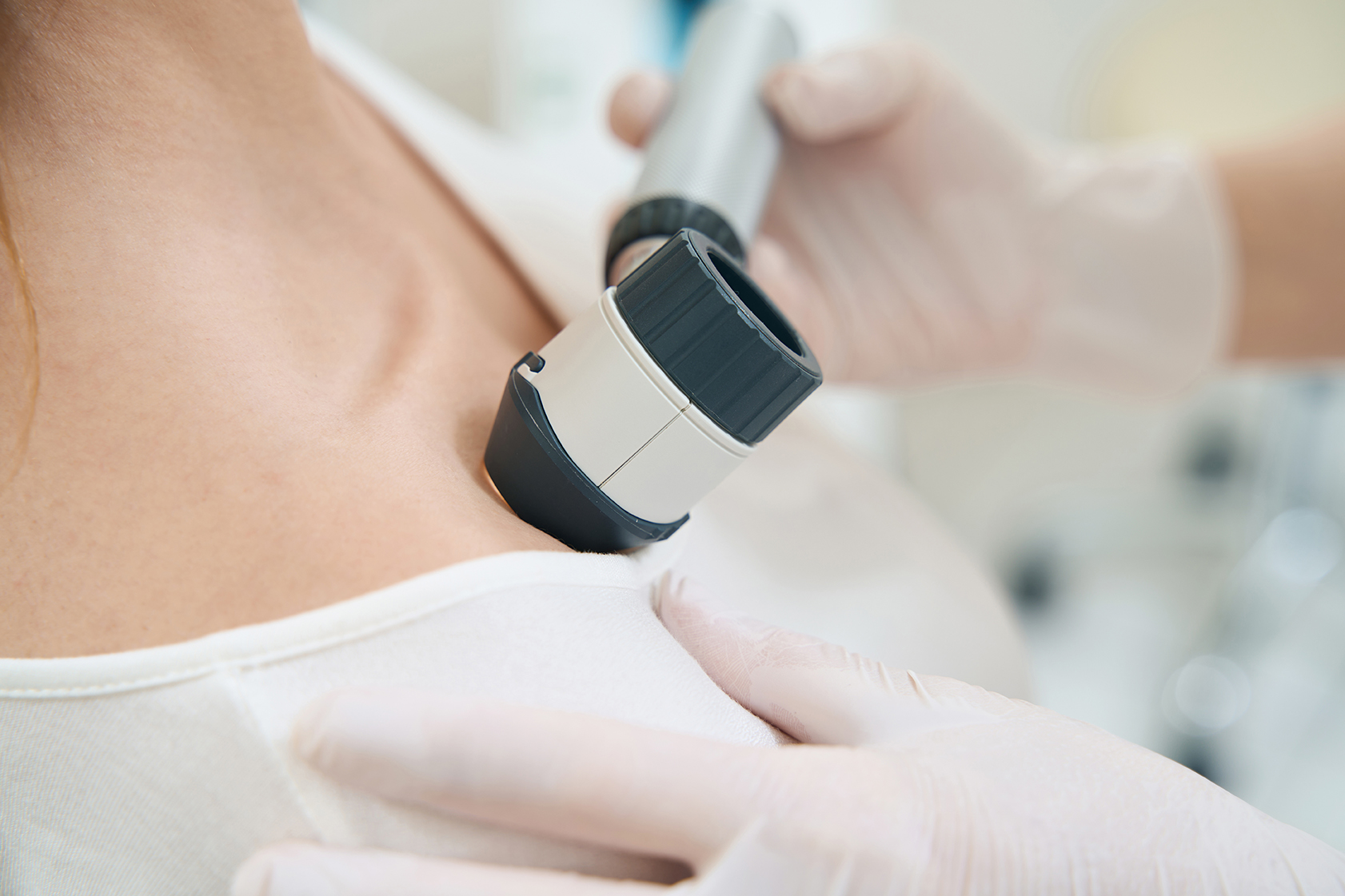- Chris Comans
- 0 Comments
As a skin cancer screening clinician based in Perth, Western Australia, my postgraduate training in skin cancer medicine and algorithms has equipped me with the skills necessary to effectively utilise dermatoscopy in the early detection of skin cancer.
In a region where sun exposure is high and skin cancer rates are notably prevalent, the importance of thorough and accurate skin checks cannot be overstated.
What is Dermoscopy?
Overview of the Dermoscopy Technique
Dermoscopy is a technique that employs a specialised handheld device to magnify and illuminate skin lesions. This advanced imaging allows me to examine moles and other skin abnormalities in far greater detail than the naked eye can provide.
Structural Analysis and Pattern Recognition
By visualising important structures beneath the skin, incorporating algorithms to pigment patterns, vascular structures, and surface characteristics, It can differentiate between benign and malignant lesions more accurately.
Why Dermoscopy is Essential in High UV Exposure Regions
Unique Challenges in Perth, Western Australia
In Perth, where UV exposure is a significant risk factor for skin cancer, the ability to conduct detailed examinations using dermoscopy is essential.
Assessing a Range of Skin Lesions
Many patients present with a variety of skin lesions, and dermoscopy helps me assess them with confidence, ensuring that any suspicious changes are investigated further. This tailored assessment approach is crucial in regions with elevated skin cancer risks.
The Role of Dermoscopy in Early Skin Cancer Detection
The early detection of skin cancer is paramount, particularly given the high rates of melanoma in Australia. Dermoscopy plays a vital role in this process, allowing me to identify clues to malignancy when viewing clients’ concerns about changes in existing moles or the emergence of new moles or spots.
By scrutinising these lesions with the dermatoscope, I can recognise the early signs of melanoma, or diagnose keratinocyte cancer such as basal cell carcinoma or squamous cell carcinoma, which is crucial for improving patient outcomes.
In my practice, I have seen how dermoscopy can lead to earlier interventions and significantly better prognosis for patients. The ability to catch skin cancers at their inception or in very early stages allows for timely treatment, which can be life-saving.
Patient Education and Empowerment Through Dermoscopy
In addition to its diagnostic capabilities, dermoscopy also serves as a powerful educational tool. When patients can see their own skin lesions magnified on a screen, it fosters a greater understanding of their skin health. I take the time to explain the findings, discussing whether a lesion appears benign or if further investigation is warranted. This transparency not only demystifies the process but also empowers patients to take an active role in their skin health.
Conclusion
Working in Perth, Western Australia, where the sun shines brightly and skin cancer is a pressing concern, I have found dermoscopy to be an indispensable part of my practice. The enhanced visualisation it provides, combined with my training in skin cancer medicine and algorithms, allows me to deliver accurate and timely assessments for my patients.
In a landscape where vigilance against skin cancer is crucial, dermoscopy stands out as a key tool in the fight for early detection and better patient outcomes.

